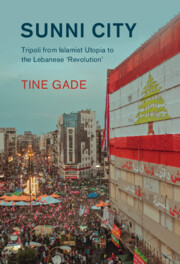Book contents
- Sunni City
- Cambridge Middle East Studies
- Sunni City
- Copyright page
- Contents
- Figures
- Acknowledgements
- Who Is Who in Tripoli?
- Timeline of Major Events
- Note on Arabic Transliteration
- Introduction
- 1 Tripoli’s City Corporatism and Identity Politics during the Nationalist Era (1920–1979)
- 2 Regional Proxy War
- 3 The Postwar Erosion of Tripoli’s City Corporatism
- 4 The Globalization of Islam and the Crisis of Religious Authority
- 5 The Future Movement
- 6 Tripoli’s Islamists
- 7 The Impact of the Syrian Civil War and Beyond (2011–2020)
- Conclusion
- Bibliography
- Index
- Books in the Series
6 - Tripoli’s Islamists
Clients of the Arab Gulf States or Autonomous Actors?
Published online by Cambridge University Press: 10 November 2022
- Sunni City
- Cambridge Middle East Studies
- Sunni City
- Copyright page
- Contents
- Figures
- Acknowledgements
- Who Is Who in Tripoli?
- Timeline of Major Events
- Note on Arabic Transliteration
- Introduction
- 1 Tripoli’s City Corporatism and Identity Politics during the Nationalist Era (1920–1979)
- 2 Regional Proxy War
- 3 The Postwar Erosion of Tripoli’s City Corporatism
- 4 The Globalization of Islam and the Crisis of Religious Authority
- 5 The Future Movement
- 6 Tripoli’s Islamists
- 7 The Impact of the Syrian Civil War and Beyond (2011–2020)
- Conclusion
- Bibliography
- Index
- Books in the Series
Summary
This chapter departs from the curious Memorandum of Understanding signed between Hizbollah and some of Tripoli’s Salafis in 2008. Tripoli’s Salafis, who perceived themselves as custodians of the Sunni doctrine and identity, were known for their very antagonistic discourse vis-à-vis the Shiʿa Hizbollah movement.
This chapter shows how sectarianism and the new political polarization in Lebanon after the Syrian pull-out in 2005 caused the Islamists in Tripoli to change their strategies and divide. The more liberal, but highly conflictual, climate empowered the Islamists on the one hand, but also divided them along a variety of political issues being debated in Lebanon on the other. Some aligned themselves with the March 14 Alliance and the Future Movement, while others came closer to Hizbullah, Future’s opponent. Yet, Islamists in Tripoli also came together to collectively engage in pan-Islamist protests. This indicates that most of Tripoli’s Islamists are independent actors, and that Islamists cannot be viewed as one collective political force.
Keywords
- Type
- Chapter
- Information
- Sunni CityTripoli from Islamist Utopia to the Lebanese ‘Revolution', pp. 175 - 193Publisher: Cambridge University PressPrint publication year: 2022

